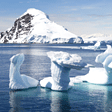- Home >
- Our Actions >
- Ambassador report
9
Comments
Flood Disaster in Nepal 2017 |
|---|
|
by Ashtha Lamsal | 15-08-2017 00:20
|
|
Nepal is not new to flooding and other natural disasters that are brought about by annual monsoon. In fact, if we go down historical records there are instances of flooding almost every year in the tarai, and also mudslides and avalanches in the hills/mountains areas. As long as the climatic conditions do not deviate significantly from the current norms, this phenomenon will continue in the years to come. In fact, with increasing urbanization and encroachment into natural resources, such events will only increase in Nepal. One of the biggest challenges during, and post flooding situations is possible outbreaks of diseases in the affected community. There are diseases that can be transmitted between people, otherwise known as communicable or infectious diseases. Then there are diseases that would be inherent to a person, brought about by adverse conditions, also known as non-communicable diseases. In a natural disaster involving water, in case of flooding, communicable diseases are almost certain to occur. There are viruses, bacteria and other organisms that can cause diseases, and many of these can thrive very well in water. One of the most common but controllable disease outbreaks is diarrheal disease outbreaks. These can be different types such as cholera, typhoid, dysentery among others and many affect the gut. Those are found in contaminated water mainly as a result of mixture with sewage, animal feces, and carcass. Others, which can be more dangerous are hepatitis A and hepatitis E, both of which are caused by hepatitis viruses capable of ultimately affecting the liver leading to complications and even death. There are also some other types of infectious agents that can cause other complications. All of these can also be controlled by various methods. These include adding chlorine tables to drinking water, boiling water used for consumption, washing hands with soap and clean water regularly, using gel-based hand sanitizers as immediate steps to prevent water borne disease outbreak. Long-term solutions include vaccination against many of the water borne diseases and also good sanitation and hygiene practices in the at-risk community. The other type of health risk posed by natural disasters such as flooding is known as ?vector-borne? disease whereby an insect will carry the infectious organisms. This is especially true in hot and humid conditions where water reservoir is present. Tarai plains are perfect habitats for mosquitos and other insects that can carry organisms that cause malaria and dengue among other diseases. In the immediate aftermath of a flooding, the human population is usually without proper shelter and thus open to insect bites, leading to possible outbreaks of the diseases. The immediate solutions include proper clothing, mosquito nets, repellent use, and fumigation whenever possible. Children are especially vulnerable to such infections and therefore should be provided extra preventive measures. Furthermore, the risk of pneumonia, especially in children, and certain heart conditions in the older population is very much a possibility in flood disaster situations. Therefore shelter and dry warm clothing with proper nutrition would be required in the affected population. To summarize, disease outbreaks in flood-affected areas of Nepal can be expected in the near future. However, this doesn?t mean that the state cannot minimize the risks that contribute toward such events and control those before they become an epidemic. The most important step is the immediate one. Assessment of risks and strategies to mitigate those should be put into place by the Ministry of Health right away, in coordination with other ministries, line agencies (including non-governmental organizations) and experts. Sooner this takes place, the more likely that maximum number of suffering population will benefit from those actions. picture source: Google |
  
|
|
|










 Previous : Building the Eco generation
Previous : Building the Eco generation









9 Comments
Ashtha, thank you for your report. First of all I feel sorry to hear the bad news. Flood is a huge disaster that sometimes almost destroys humanity. I wish Nepali government tries their best to tackle the issue.
Posted 20-08-2017 20:08
Hi Ashtha, tahnks for sharing your report.
I'm sorry for the flood disaster in Nepal. Extreme weather events is becoming more frequent than ever, and it's time for all countries to work together to deal with this.
Hope things get better soon.
Posted 19-08-2017 16:55
Atleast we have roof to hide under but animals are victimized more their shelters are drowned and they are seen floating near Narayani edges.
Posted 16-08-2017 11:35
It is pathetic and sad to note that inspite of knowing that it is an annual phenomenon, the government is not better prepared. There should be increased mobilisation of resources to rescue the people who are stuck. There is a need for more disaster relief operations and task forces. Thank you for sharing. You stay safe and strong.
Posted 16-08-2017 06:40
News about the disaster Nepal are flooding everywhere I hope that things will be better soon.
Posted 15-08-2017 21:42
Interesting! I am curious as to what actions are being done in Nepal to improve the situation though. Very similar situation here in the Philippines but action to prevent flooding has been slow. Any thoughts?
Posted 15-08-2017 21:30
Stay strong Nepal!
Posted 15-08-2017 12:06
Very critical condition in Nepal .Time to time natural disasters knock the door of danger . it's time to stop such natural disasters .if u don't involve in now also our Nepal will collapse one day very sad to say but this is reality.
Posted 15-08-2017 08:22
Such natural disasters occuring almost every year, its time to prepare for the consequences before the disaster occurs.
Posted 15-08-2017 03:14